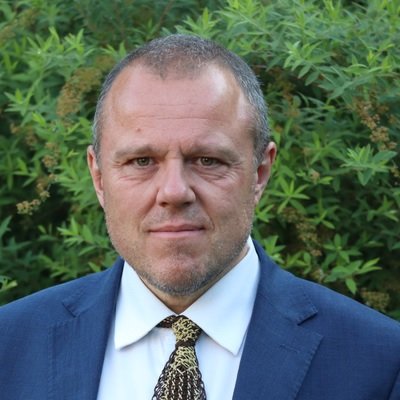Telling the Story of the People Called Methodists
'Methodist Heritage' is the name for the work of the Methodist Church in Britain aimed at preserving its heritage and using it as a tool for contemporary mission.
In 2008, the Methodist Church's governing body, the Methodist Conference, received a report highlighting the value and untapped potential of the Methodist Church's historic sites and archives. The Conference approved recommendations in that report to convene a strategic Methodist Heritage Committee and employ a Heritage Officer within the Connexional Team to coordinate and support its heritage resources.
The Methodist Heritage Committee oversees the publication of the full-colour visitors' guide to Methodist heritage sites of historic importance, the Methodist Heritage Handbook , and supports its distribution through travel trade and Christian exhibitions, as well as directly to church congregations and visitors to Methodist Heritage sites. The Methodist Heritage Committee also publishes a bi-monthly newsletter.
The Methodist Heritage Committee has done work on the theology of heritage as a mission tool and on the organisation of its sub-committees and groups to improve support and service to those with interest in and/or the care of Methodist heritage across Britain.
Who are the Heritage Committee?













The Methodist Heritage Committee
The Methodist Heritage Committee is appointed by the Methodist Council to protect, advocate and advance the interests of Methodist heritage throughout the Connexion, with a particular focus on the role of Methodist heritage as a tool for the contemporary mission aims of the Methodist Church.
The membership and responsibilities of the Methodist Heritage Committee are governed by Standing Orders approved by the Methodist Conference (see The Constitutional Practice and Discipline of the Methodist Church Volume 2 Standing Order No. 337).
The Methodist Heritage Committee may include up to 13 members: a chair, four trustees (one each appointed by the respective trustee bodies of the four main heritage sites), the liaison officer for Methodist archives ex officio, a Connexional Team Secretary (or his/her representative), and up to 6 other persons chosen to ensure that the committee has expert knowledge, experience and skills in areas such as:
- theology
- historical research
- archiving and record management
- the care and conservation of historic buildings, artefacts and records
- heritage and museum work outside the Church
- funding, fundraising and marketing; heritage tourism
- the World Church
- information technology in heritage and education contexts
- education and lifelong learning
- events and activity programming.
The Methodist Heritage Officer convenes the Committee, but is not a voting member.
A Note from the Chair
Chair of Heritage Committee: Alan Beith
(the Rt Hon the Lord Beith)
I have had a lifelong interest in Methodism’s heritage of buildings, artefacts and historical records.
If I look back far enough, perhaps I can trace my awakening interest to a tablet in the chapel of the former mining village where I was brought up.
It dated from the 1840s, and bore the simple message “Coal pits on fire, providentially extinguished without loss of life. The earth is the Lord’s and the fullness thereof.”
It told a story of work and faith supporting each other. And so much of our heritage has a story to tell. Too often Methodists have wrongly assumed that our buildings and the art and design within them are inferior, and of little or no value either to us or to the communities we serve.
Yet these things can be assets for mission, and we are beginning to see, as the Church of England has seen with its small village churches, communities telling us that they do not want to lose that rich inheritance.
We cannot and should not keep all our buildings - I have been involved at the Historic Chapels Trust in trying to secure a future for particularly notable chapels no longer in use, such as the magnificent Bethesda Chapel in Hanley.
And many of those that we keep will need to widen their role in the community, while using every opportunity to make sure that they tell the Gospel story in action as well as in words, atmosphere, history, beauty and song.
As well as buildings and objects, we have archives in many locations which tell inspiring stories of Christian witness and allow them to be studied in detail.
And we have examples at Wesley’s Chapel, at the New Room in Bristol, at Epworth Old Rectory and at Englesea Brook of professional standards of presentation which attract large numbers of visitors.
I want to see these examples, and others, serving as a reminder to Church Councils and Trustees throughout the Connexion that where we have a heritage asset, the first consideration should be whether and how we can use it for mission, rather than how we can get it off our hands.
And we need to find ways of disseminating practical help, advice and skill training for the hard-pressed volunteers who carry these responsibilities. I look forward to working with the skilled and experienced committee members who give up their time to serve on the Heritage Committee and on other committees whose work relates closely to ours.
My “day job” is in the House of Lords, but it leaves me with at least some time I can use to help Methodism to make our rich inheritance serve our mission to this present age.
Image courtesy https://beta.parliament.uk/media/j7WTKwNk
Licence https://creativecommons.org/licenses/by/3.0/
Methodist Heritage Publications

Methodist Heritage Handbook
An A5 companion to over 100 heritage sites, order your free (plus P&P) copies today.

Methodist Heritage Welcome Booklet
Designed in particular for Methodist heritage sites, these attractive booklets explain something of the history of Methodism together with the ethos and practices of today's Church.

John Wesley's London Walking Map
The walk takes about 2½ hours without stops and visits to the attractions along the route. The places indicated by * are major tourist destinations and could occupy several hours each in admiring the architecture and exploring the exhibits.
Contact us
We would love to hear from you with questions, comments or examples of how you're using heritage for mission.
